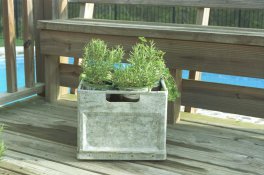Hi all - thanks for the comments.
I tried again, this time with 5.2g/L CD-3, 28g/L (if I remember correctly) Sodium carbonate (ie a little higher than the published formula), and benzotriazole at 20mg/L. That stuff is really powerful, and in my next test I will reduce it further to maybe 5mg/L. Everything else was per the published formula (except 2g/L Calgon instead of anti-cal 4).
I still have a bit of a cast. Of the images below, "eterna-test2-1.jpg" is a straight, unmanipulated scan showing a slightly greenish cast. The 2-1aa file is color corrected as closely as I can get to the actual subject. For this, on Corel Photo Paint, I added 12 units of blue; nothing else. The third image, 2-1bb, has some contrast enhancement to punch it up a bit.
So the bottom line is...... test 2 needed a little bump in blue to get a correct output.
Any suggestions for how to improve the development of the blue layer? I know I have a lot of variables going on. I am not sure that the benzotriazole is really having any effect on color balance. I will reduce it next time, and eliminate it after that, to see what happens. Increasing the CD-3 seemed to be a good idea, and is perhaps consistent with Athiril's comment above. The cast is less than when I started, although I am using a much fresher stock, and that could account for that.
I could probably acquire some AF-2000, but not the Anti-Cal 4, the minimums are too high.
I have to say, this Eterna Vivid stuff seems pretty awesome - very fine grain for a 500T, and as I paid $90 for 1,000 ft, a lot cheaper than Portra! Now if only I can develop it properly....!











 You get very high DMIN and nearly unusable negatives. But I did not notice that problem with the ECN-2 film. However, I feel that the use of the clearing bath with any ferricyanide bleach is a "best practice."
You get very high DMIN and nearly unusable negatives. But I did not notice that problem with the ECN-2 film. However, I feel that the use of the clearing bath with any ferricyanide bleach is a "best practice." 